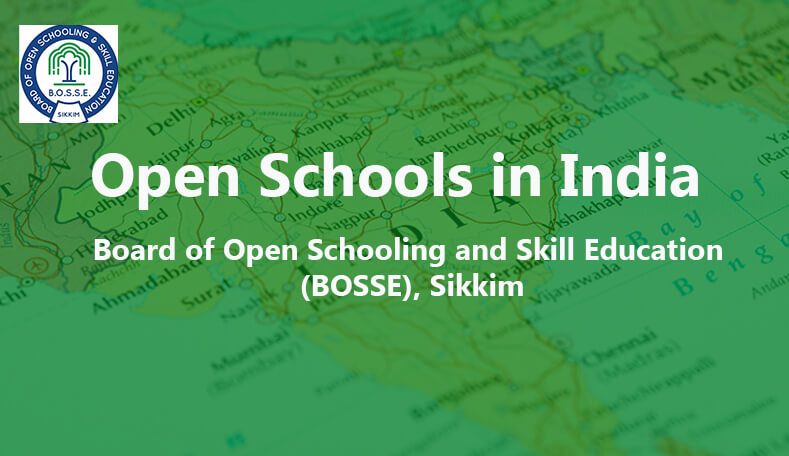Open learning is a type of alternative education that is open to everyone. Learners at Open Schools in India have the freedom to pick from many options when it comes to time, place, instructional techniques, forms of access, and other aspects of their learning. Open learning, on the other hand, is a concept built on open educational resources, open-source technologies, and online communities for knowledge acquisition. Its goal is to empower students to learn in a self-directed, independent, and interest-guided manner. Open school boards in India operate on the principle that teachers and students do not have to be present at the same time or in the same place and that they are flexible in terms of teaching and learning modalities and timing, as well as admission criteria, without sacrificing necessary quality considerations. In India, the open school system is a viable non-formal education option. Even among regular students, open schooling is growing in popularity. Regular schools continue to provide only a few limited, traditional combinations in the 12th grade, which the majority prefers. Open schools, on the other hand, allow students to mix and match subjects based on their interests and future goals.
Students at BOSSE one of the most reputable Open schools in India, have the flexibility and freedom to learn at their speed. The “open” in “open schooling” refers to the system’s flexibility; few rules regulate students’ ages, prerequisites, course content, or the number of courses they must take. Youth who did not attend school as a child, for example, can enroll in BOSSE courses, which will offer them the equivalent of secondary education without the embarrassment of sitting in a classroom alongside children much younger than themselves. If a student wishes to be a part of the open school system, BOSSE is the most viable choice for clearing the regular school equivalent of standard 10th and 12th class exams in India. School dropouts, pupils residing in remote areas, students pursuing professional sports or other careers, aspirants with special needs, pupils who are unable to cope with a second language, and those who opt-out of the rigors of the regular academic curricula can all benefit from the schools of open learning.
Open Schools Curriculum Pattern
Open Schools in India follows a learner-centered approach to education. Students can choose from a variety of disciplines to fulfill their own needs and goals. They can learn at their own pace using self-instructional resources that are tailored to their needs. Students can take subject exams one at a time, according to their readiness, using the On-Demand Examination (ODE) system. Audio-video and face-to-face contact lessons are held at the study centers during vacations and weekends to enhance BOSSE’s open learning concept. The registration of the student is valid for five years. Students can modify or add subjects during their five-year admission term as long as they don’t take more than seven. BOSSE, one of the most popular open school boards in India, is the ideal option for students who, for whatever reason, are unable to attend traditional schools but yet want to participate in the same educational possibilities as their peers.
The educational endeavor of Open Schools in India can assist the following groups of society:
- Young individuals can complete vocational training and academic courses while self-employed or working as non-skilled labor.
- Young moms can complete their secondary or senior secondary school by studying at home and attending tutorials only when necessary and when their obligations allow.
- Students can also turn to an open school board in India if they want to take a specific combination of subjects that aren’t offered in the conventional education system.
- Young adults can enroll in one or two courses at a time and study when their personal and professional commitments permit.
- The schools of open learning benefit the physically and mentally handicapped, women, school dropouts, residents of rural areas and distant locales, and 10th or 12th fail students.
- Students who want to pursue a vocation that takes more time than formal educational systems’ time-bound framework and attendance norms allow prefer open schools.
Features of Open Schools in India
- Education is easily accessible.
- Secondary education is the equivalent of 10th
- Senior Secondary courses are equivalent to the 12th
- Admission has no upper age limit.
- There is no need to attend classes.
- Courses in vocational and skill education are also available.
- There is no set time for appearing in an examination.
- The ODE system at Open Schools enables students to take exams whenever they are ready.
- Courses are available at a reasonable fee structure.
List of Open Schools in India –
- National Institute of Open Schooling (NIOS)
- Board of Open Schooling and Skill Education (BOSSE), Sikkim
- Bihar – Bihar Board of Open Schooling and Examination (BBOSE)
- West Bengal – West Bengal Council of Rabindra Open Schooling (WBCROS)
- Andhra Pradesh – A.P. Open School Society (APOSS)
- Chhattisgarh – Chhattisgarh State Open School (CGSOS)
- Madhya Pradesh – M. P. State Open School Education Board (MPSOS)
- Rajasthan – Rajasthan State Open School (RSOS)
- Telangana – Telangana Open School Society (TOSS)
- Haryana Open School, Bhiwani
- Maharashtra – Maharashtra State Open Board of Secondary & Higher Secondary Education
To conclude, the goal of Open Schools in India is to remove barriers to learning, provide school education to all, reach out to the unreached, increase literacy, make secondary and senior secondary education accessible to all, and provide vocational and skill development programs to all classes of society, without discrimination. Schools of open learning provide a variety of learning opportunities up to the pre-degree level. It has various benefits: students become self-reliant and effective decision-makers, they are self-regulated and focused on the necessary learning, and they are less stressed. In short, open schools are the ideal alternative to traditional schools since they provide students with a great lot of flexibility.
